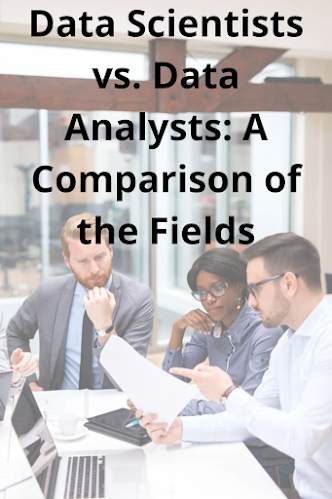Data Scientists vs. Data Analysts: A Comparison of the Fields
Numerous new vocations and positions have emerged as a result of the expansion of the data landscape.
The terms "data scientist" and "data analyst" are two professions that you've probably heard of. Despite the fact that they sound similar, they are not the same.
How much money can you expect to make in each of these positions, and what qualifications, training, and experience are required? Find out by reading on!
Data is the 21st century resource that is most in demand. In our increasingly complicated and interconnected world, analyzing data enables organisations, governments, institutions, and individuals to make more informed decisions.
More information is being gathered than at any other time in human history. The majority of this data is still awaiting analysis.
The need for data specialists is growing at an astounding rate. Since 2012, the number of data analytics employment has increased by 650 percent.
By 2026, the U.S. Bureau of Labor Statistics predicts that over 11.5 million new employment in data will have been created.
Role responsibilities of a data analyst
A data analyst can work with various technologies, including:
- Graphical spreadsheet applications like Microsoft Excel or Google Sheets
- Generalist programming languages like Python, Java, or Scala
- Statistical programming languages like R
- Computing environments like MATLAB or SAS
- Data analysis libraries like Pandas
- Relational database management systems like Postgres or MySQL
- Data visualization software like Tableau or Power BI
As a data analyst gains experience, they learn which tool is best for each job. There is rarely one “perfect” solution. Rather, each tool has its own advantages and disadvantages.
Role responsibilities of a data scientist
The fact that data scientists create prediction models sets them apart from data analysts.
An analyst of data seeks to comprehend what has occurred. A data scientist wants to foresee the future.
Within the data science ecosystem, there are many subspecialties.
Machine learning, for instance, aims to educate computers to spot patterns based on past data.
Machine learning models on websites like Udemy can forecast which courses you'll find interesting based on the ones you've already bought.
NLP, which focuses on programming computers to analyse and comprehend written text and human language, is another illustration.
NLP algorithms can provide automatic subtitles for videos on the Udemy website by spotting recurring themes in human dialogue.












No comments: